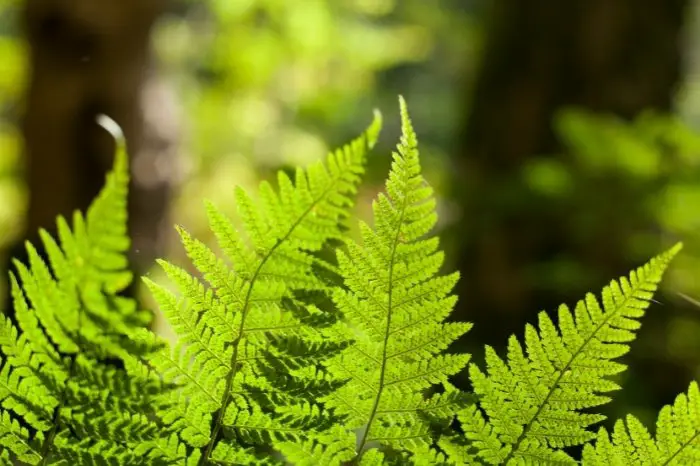Last Updated on September 14, 2022 by Griselda M.
In this article, we will look at a complete guide on Dallas fern care, and everything you need to know about caring for this plant.
All About Ferns
Ferns are an ancient group of plants that have been around for many years. They are an important part of the ecosystem. Ferns can be divided into three major groups – Pteridophytes (fern allies), gymnosperms (conifers and cycads), and angiosperms (flowering plants). The best way to distinguish between them is to look at their leaves.
Ferns have a very special structure called a “thallus” which is the stem or stalk of the plant. This is made up of fronds that come off the main stem at regular intervals. Each frond has a distinctive leaf-like structure called an “arch”.
The arch is where most of the nutrients are stored. It’s made up of a thin layer of cells that are not photosynthetic but can capture sunlight and convert it into chemical energy. The plant uses this energy to produce carbohydrates that can be used by the plant for growth. These carbohydrates are stored in the arch. When there is a lack of light, the plant converts the stored carbohydrates into starch and stores them for the winter months.

Ferns have a unique reproductive strategy. They are mostly hermaphrodite – having both male and female parts – and they produce spores called “sporangia”. The spores are very tiny and are dispersed by wind or water. Ferns have many uses, including in landscaping, medicine, and as a source of food. They can also be used to make brooms, baskets, and other crafts.
Ferns can be divided into two groups: true ferns and filmy ferns. The most common group of ferns is the true ferns, which are distinguished by having a frond that is free from a protective sheath. True ferns are further divided into four families based on the structure of their fronds: Osmundaceae, Cyatheaceae, Blechnaceae, and Marattiaceae. The Osmundaceae is an ancient family of ferns and includes some of the largest living ferns.
Read more about Which Is Better – Copper Vs Sulfur Fungicide?
Dallas Fern
Dallas fern is one of the best ferns to grow. It has many attractive features and is easy to grow. Dallas fern can grow up to 24 inches tall, and 24 inches wide. This particular plant is drought-tolerant. It can be used as a houseplant, or as a specimen plant in a garden. Dallas fern has a rich green color and a fine texture. The leaves are stiff and upright. The fronds are long and have a soft texture.
This species has an upright habit, which means that it grows straight up from the ground without bending down. Dallas fern is suitable for all types of gardens, and it is easy to grow. There are several different varieties of Dallas fern.
Dallas fern can be grown in partial shade or full sun. It is also a good houseplant as it does not require too much water and can tolerate temperatures between 10°C to 35°C. The plant needs moist, but well-drained soil with regular watering during dry periods. Dallas fern does not like being overwatered. If you live in an area that experiences hot weather, this fern can be grown outdoors (as long as the temperature does not exceed 30°C).
Sprig & Stone Fern Bundle (5 Plants)
The Dallas Fern Care
Dallas fern can be planted in containers or the ground, but it is most often grown in a container. When growing Dallas fern it is important to provide it with the right kind of fern care that includes:
Provide rich soil
When planting your Dallas fern, you need to plant it in good quality potting soil or rich garden soil. Either will work fine.
Water regularly
Water your plant once every 5-10 days, depending on the weather. The warmer the weather, the more frequently to water your fern.
Fertilize regularly
Fertilizing helps plants grow and flourish. Try to fertilize once a month throughout the growing season.
Maintaining a consistent temperature
The right temperature for growing Dallas fern is between 65-75 degrees Fahrenheit. You can use an automatic thermostat to regulate the temperature in your room or garden.
Maintain proper humidity
Humidity levels should be maintained at between 45-65 percent. A humidifier can be used to maintain the required humidity level.
Lighting
Plants need light to grow and thrive. Dallas ferns are no different. When you place your Dallas fern in the right light conditions, it will bloom and grow much better.
Dallas fern care is not difficult. If you know what you’re doing, then you can easily take care of your Dallas fern.
When growing Dallas fern in containers, it is important to provide it with the right kind of care; this includes:
Choosing a good container
Choose a container that is deep enough for the plant to stand up. You don’t want the soil to be so dry that the roots start to rot and die. A container that has drainage holes will help prevent this from happening. If you live in an area that gets little rain, you may have to add a little bit of organic material, such as peat moss or perlite to help keep the soil moist.
In Conclusion – Dallas Fern Care
Dallas fern care is easy if you provide it with the right growing conditions. Generally, ferns are easy to care for and grow in your home.
They do require a lot of sunlight, but they don’t mind a little shade. They can be easily maintained by cutting the fronds back each year and repotting into fresh soil. Ferns are low maintenance and do not require too much attention.
FAQs
How Often Do You Water a Dallas Fern?
It's best to water a Dallas fern every 5-10 days; the hotter the weather, the more water your fern will need.
How Big Does a Dallas Fern Get?
The average size of a Dallas Fern is 24 inches tall, and 24 inches wide.
Do Ferns Need Direct Sunlight?
Ferns grow best with indirect sunlight. This is because the plant is very susceptible to burning, and the leaves crisping.
Are Ferns Hard to Take Care of?
No. Dallas ferns are relatively easy to care for. They're low maintenance, in comparison to other plants.
Caroline is a gardener who loves to get down to the nitty–gritty of gardening. She proudly proclaims herself as a ‘dirt worshipper‘ and can often be found deep in the garden, covered in soil and singing to her plants. As a self–proclaimed ‘plant whisperer‘, Caroline believes that plants need love and attention just like any other living thing, and she loves to give them both. When she‘s not tending to her garden, you can often find her researching the latest gardening trends, or teaching others how to make their gardens thrive



